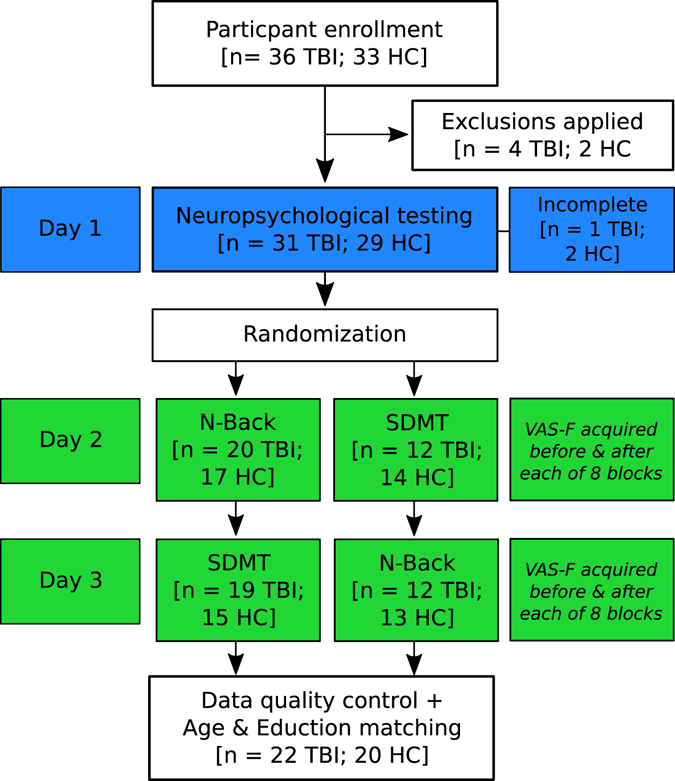Figure 1.

A flow diagram of the experimental design. Thirty-six individuals with TBI and 33 HCs were enrolled. After exclusions were applied (e.g., MRI incompatibility, psychiatric history, claustrophobia), the sample was reduced to 32 individuals with TBI and 31 HCs. Subjects then participated in a day of neuropsychological (NP) testing. Three subjects did not complete the NP test battery (1 TBI, 2 HC), and because the focus of the current study was on functional neuroimaging, these subjects were retained in the sample. Subjects were then randomized into two groups. One group performed the N-Back test while in the fMRI scanner on Day 2 and the SDMT task in the scanner on Day 3. For the other group, the order of N-Back and SDMT tasks was reversed. There was some attrition during this three-day experiment, resulting in a final sample of 31 individuals with TBI and 28 HCs. After applying data quality control (e.g., excluding subjects with excessive motion) and matching the two groups on Age and Education, the final sample was 22 individuals with TBI and 20 HCs.
